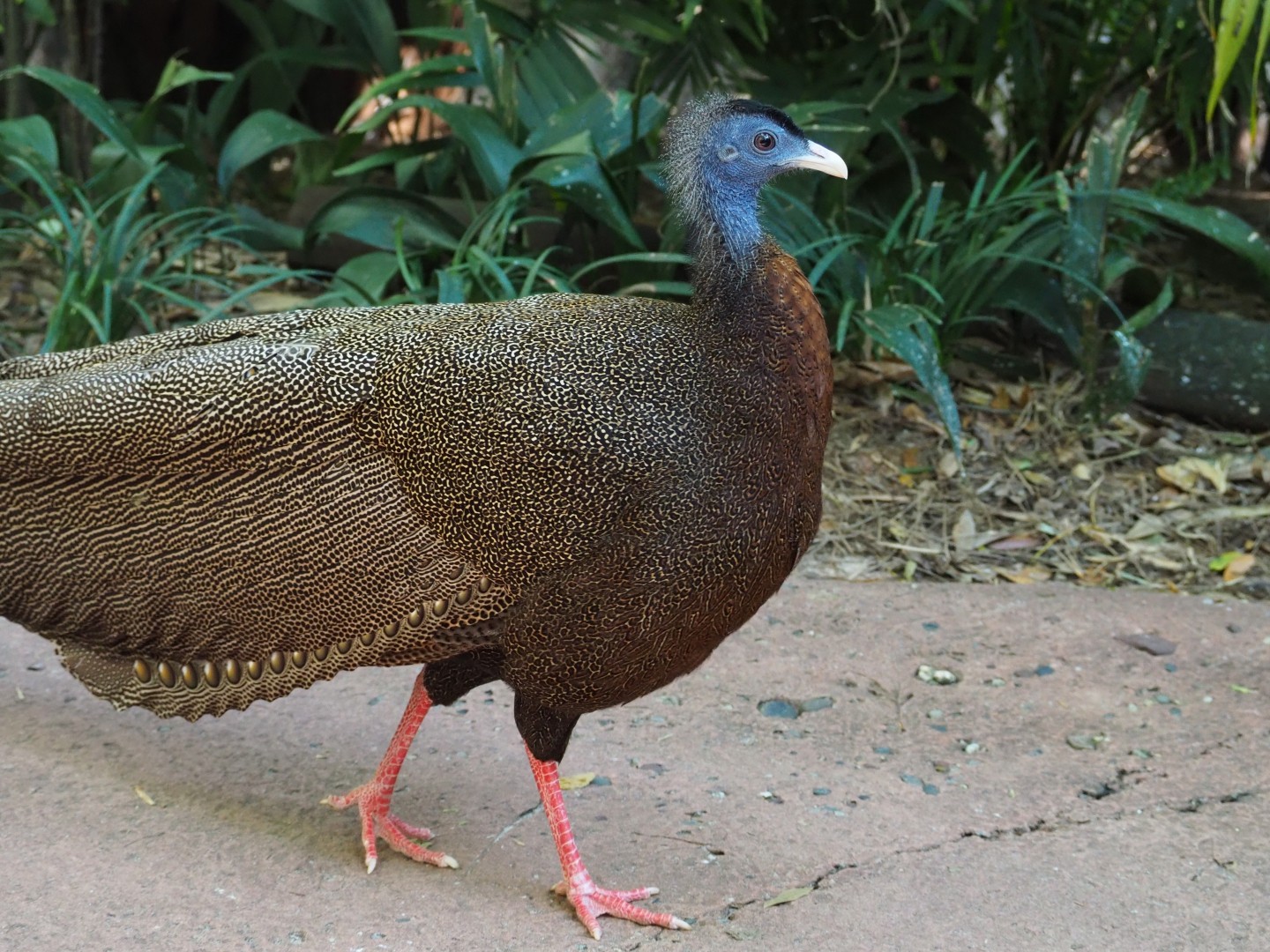Great Argus
A species of Great Argus, Also known as Argus Pheasant Scientific name : Argusianus argus Genus : Great Argus
Great Argus, A species of Great Argus
Also known as:
Argus Pheasant
Botanical name: Argusianus argus
Genus: Great Argus
Content
Description General Info
Description
The great argus is a brown-plumaged pheasant with a blue head and neck, rufous red upper breast, black hair-like feathers on the crown and nape, and red legs. The male is one of the largest of all pheasants, measuring 160–200 cm (63–79 in) in total length, including a tail of 105–143 cm (41–56 in), and weighing 2.04–2.72 kg (4.5–6.0 lb). Males have very long tail feathers and huge, broad and greatly elongated secondary wing feathers decorated with large eyespots. Young males develop their adult plumage in their third year. Females are smaller and duller than males, with shorter tails and fewer eyespots. They measure 72–76 cm (28–30 in) in total length, including a tail of 30–36 cm (12–14 in), and weighs 1.59–1.7 kg (3.5–3.7 lb). 
Size
72 - 200 cm
Life Expectancy
15 years
Nest Placement
Ground
Feeding Habits
Great Argus primarily eats fruits from Palmae, Annonaceae, and Leguminosae, as well as various arthropods, termites, and ants. This bird forages in the understorey and canopy, employing its unique ability to glean leafy material.
Habitat
Great Argus's habitat is mainly the dense forests of Southeast Asia, including tall logged and primary dipterocarp forests, as well as lowland peat and white-sand heath forests. It typically ranges from sea-level up to 950 meters, occasionally found at higher elevations. The species shows a strong preference for undisturbed forest areas, with less occurrence in secondary growth forests.
Dite type
Omnivorous
General Info
Feeding Habits
Bird food type
Behavior
Though the great argus is not as colorful as other pheasants, its display surely ranks among the most remarkable. The male clears an open spot in the forest and prepares a dancing ground. He announces himself with loud calls to attract females, then he dances before her with his wings spread into two enormous fans, revealing hundreds of "eyes" while his real eyes are hidden behind it, staring at her. Despite displays similar to polygamous birds and though the great argus was thought to be polygamous in the wild, it has been discovered that it is actually monogamous. It feeds on the forest floor in early morning and evening. Unusual among Galliformes, the great argus has no uropygial gland and the hen lays only two eggs. 
Distribution Area
The great argus is native to the jungles of Borneo, Sumatra and the Malay Peninsula in southeast Asia. 
Species Status
Due to ongoing habitat loss and to being hunted in some areas, the great argus is evaluated as Vulnerable on the IUCN Red List. It is listed on Appendix II of CITES. 
